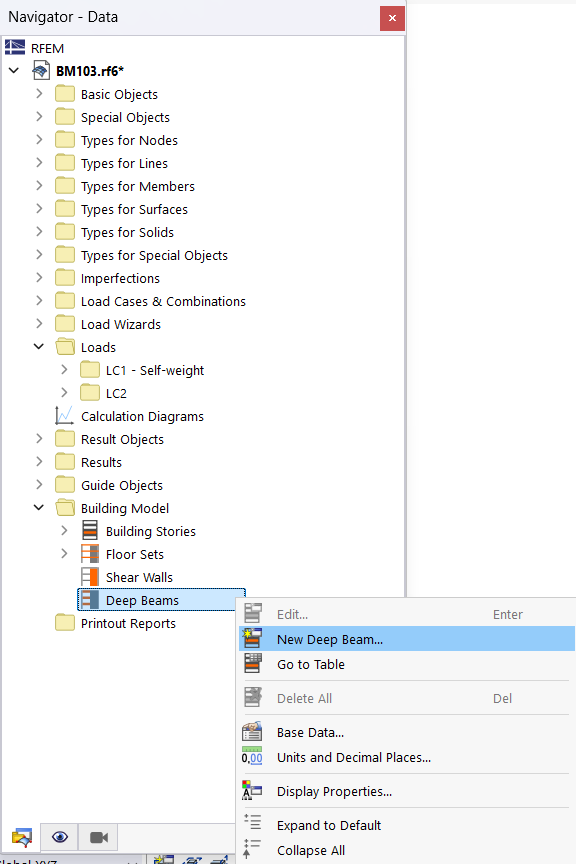A deep beam is a structural component in reinforced concrete or timber structures that has a large cross-section height with a short span. According to EN 1992‑1‑1, Section 5.3.1 (3), for example, a beam is considered to be a deep beam if the span length is less than three times the cross-section depth. Examples of deep beams are window and door lintels, downstand beams, or split-level slabs. For each deep beam, RFEM creates a result beam that converts the surface internal forces into member internal forces by integration, and allows for design as a member.
To define a spandrel, right-click the Spandrels entry in the "Building Model" category. Then, select New Spandrel in the shortcut menu.
In the "Spandrels" dialog box, you can then define the properties of the structural components.
Assignable Objects
In most cases, a deep beam is described by surfaces and surface cells. If you want to define it using members, select the corresponding option in the list (see the image above).
Surfaces and Surface Cells / Members
Select the surfaces and surface cells or members graphically in the model using the
![]() button. The numbers of the objects cannot be entered manually.
button. The numbers of the objects cannot be entered manually.
Segments
Generally, a segment with a result member is only created for each surface or surface cell, integrating the internal forces of the surfaces, surface cells, or members. Continuous objects, such as wall surfaces, are the exception.
Information / Options / Section
The other sections in this dialog box correspond to those of the Shear Walls dialog box.
Design Properties
You can design the internal forces of the result member using member design in some design add-ons, for example, in the course of the concrete design. To do this, select the Design Properties check box in the corresponding section.
Thus, several tabs are added to the dialog box where you can specify the settings for the design.
If you select the "Coupling Reinforcement" check box in the Main tab, another tab is added. There, you can define the parameters of the diagonal reinforcement for seismic actions, as specified in EN 1998‑1, Section 5.5.3.5, for example.
In the ultimate configurations of Concrete Design, it is possible to apply special design rules for the vertical and horizontal reinforcement of deep beams.
The minimum reinforcement of the rectangular mesh reinforcement of deep beams is specified in EN 1992‑1‑1, Section 9.7, for example.






